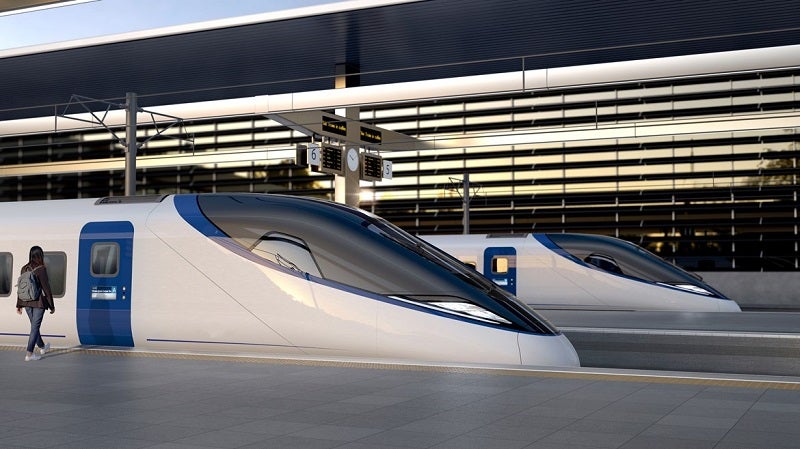
A 50/50 joint venture (JV) between Japan’s Hitachi and French firm Alstom has won a $2.6bn (£1.97bn) order for the design, construction and upkeep of 54 electric trains for High Speed Two (HS2) Phase 1.
This includes an initial 12-year train maintenance contract.
The design, manufacture, assembly, and trials of these 100% electric trains will be shared between Alstom and Hitachi Rail.
The Hitachi-Alstom High Speed (HAH-S) JV will build these trains at facilities located in County Durham, Derby and Crewe.
As part of the initial stages, the assembly of vehicle body assembly and initial fit-out will be carried out at Hitachi Rail’s centre at Newton Aycliffe, County Durham.
The second phase of fit out and trials will be performed at Alstom’s Litchurch Lane factory in Derby.
How well do you really know your competitors?
Access the most comprehensive Company Profiles on the market, powered by GlobalData. Save hours of research. Gain competitive edge.

Thank you!
Your download email will arrive shortly
Not ready to buy yet? Download a free sample
We are confident about the unique quality of our Company Profiles. However, we want you to make the most beneficial decision for your business, so we offer a free sample that you can download by submitting the below form
By GlobalDataHS2 CEO Mark Thurston said: “The trains that will be built in Derby, Newton Aycliffe and Crewe will transform rail travel, offering passengers unparalleled levels of reliability, speed and comfort and help in the fight to remove carbon from our transport system.
“I’d like to congratulate Alstom and Hitachi and we look forward to working with them to bring these exciting new trains to passengers across the UK.”
These 200m-long, eight-car trains will have the ability to run at a maximum speed of 360 km/h.
They will operate under Phase 1 of the project between London and Birmingham as well as on the current network.
The new fleet will enhance connectivity and capacity across the country, including Stoke, Crewe, Liverpool, Carlisle, Manchester, Motherwell, and Glasgow.
After a two-and-a-half-year collaborative design process, the trains’ interior layout will be planned by HS2, the Department for Transport and operator West Coast Partnership.
In comparison with other similar high-speed trains in Europe, these trains will be 15% lighter and provide 30% additional seats.
They will be equipped with energy efficiency traction technology, regenerative braking system, while featuring lightweight and aerodynamic design.
In October this year, HS2 shortlisted bidders to serve as the design and delivery partner for the project’s Phase IIa.
A high-speed railway under construction, HS2 aims to connect London, the West Midlands and Crewe.


